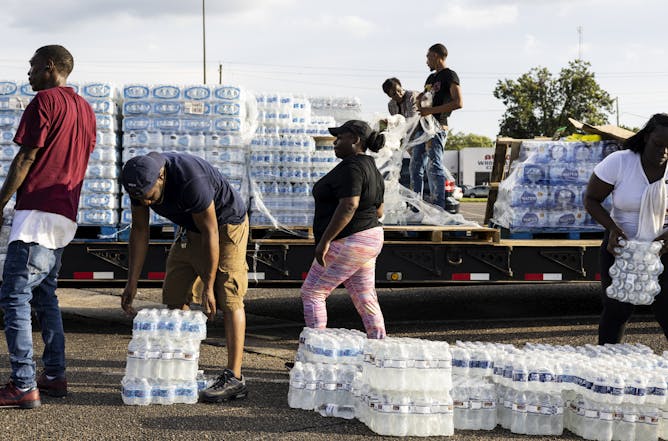|
California might have avoided rolling blackouts so far this week, but tens of thousands of homes still lost electricity for hours as aging power system components conked out in the 100-plus degree heat. My house was one of them, and it reached an unhealthy 92 degrees inside by the time the power came back on five hours later. People without options for cooling are facing far worse.
It’s just the latest sign that America’s aging infrastructure is in trouble. Think about this: A water main breaks somewhere in the country every two minutes. About a third of the nation’s bridges need rehabilitation or replacement. And the average dam is past its expected life span. Jackson, Mississippi, lost safe drinking water during flooding in late August in an ongoing problem with an aging water treatment plant.
University of Colorado civil engineer Paul Chinowsky explains the troubled state of the nation’s essential infrastructure, particularly in low-income communities and communities of color, and how climate change on top of a trillion-dollar maintenance backlog threatens to make the 2020s the age of infrastructure failure.
Also today:
|

Volunteers distributed bottled water after Jackson, Mississippi’s water treatment plant failed during flooding in August 2022.
Brad Vest/Getty Images
Paul Chinowsky, University of Colorado Boulder
A heat wave that pushed California’s power grid to the limit, and the water system failure in Jackson, Mississippi, are just two examples.
|
Science + Technology
|
-
Julia Liu, Morehouse School of Medicine; RaKetra Snipes, Morehouse School of Medicine
Overcoming the access barriers and biases that underrepresented and underserved communities face could not only improve research participation but also improve care.
|
|
Health + Medicine
|
-
Hilary A. Marusak, Wayne State University
A new study provides the first glimpse into what happens in children’s brains as they meditate.
|
|
Environment + Energy
|
-
Kevin Hamilton, University of Hawaii
The new discovery echoes a mission in 1931, when a five-day zeppelin flight sent robots to the stratosphere and redrew the maps of the high Arctic.
-
Stephanie Malin, Colorado State University; Meghan Elizabeth Kallman, UMass Boston
Organizers across the US are finding innovative grassroots strategies for helping people thrive. Many of these ventures emphasize working together as part of communities and collective systems.
-
Maurice Huguenin, UNSW Sydney; Matthew England, UNSW Sydney; Ryan Holmes, University of Sydney
Southern Ocean heat uptake accounts for almost all the planet’s ocean warming, thereby controlling the rate of climate change.
|
|
Education
|
-
Terence Day, Simon Fraser University; Paul N. McDaniel, Kennesaw State University
Different professors teach differently. If you’re a student with choices in a program, it makes sense to find out what you’re getting.
|
|